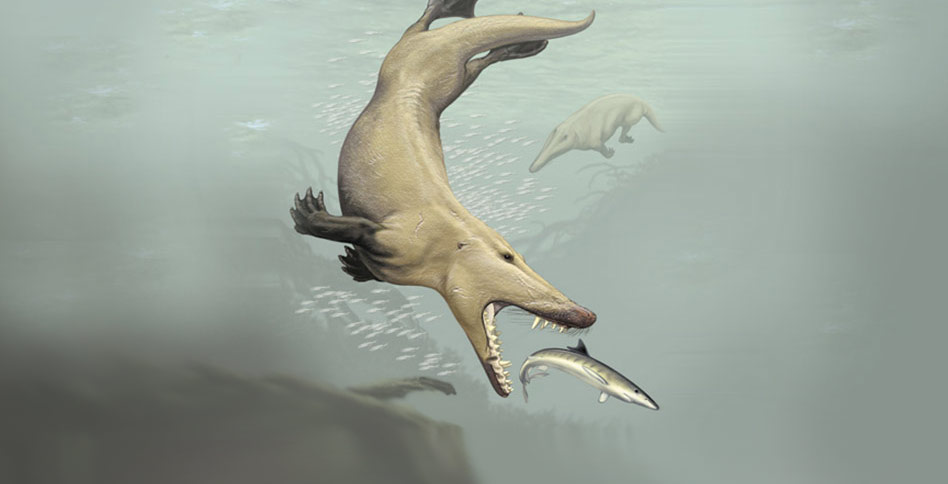
General Information
Ambulocetus survived as a transitional form of cetaceans between terrestrial and aquatic species, so this creature was characterized by going out into shallow water searching for food. Ambulocetus’ appearance was similar to either dolphins or crocodiles, with anatomical structure indicating that the fossil form belonged to cetaceans. Ambulocetus spent most of their time on the shores of bodies of water and seas and dived underwater, usually only to hunt prey. The remains of the whale were found near the territories of present-day Pakistan. The whale used mammals, birds, and fish as food, hunting in a manner similar to that of the modern crocodile that emerged from the water.
Skull structure
The lower jaw was primarily mobile, with both jaws riddled with sharp cone- or triangle-shaped teeth. The ear walls of the whale’s skull were relatively thin because, in the absence of normally functioning ears, Ambulocetus studied the vibrations of sound transmitted through the vibrations of the skull. Interestingly, on land, the whale had developed a unique mechanism for recognizing sounds: for this purpose, the animal lowered its jaw to the ground to feel the vibrations (“Ambulocetus”).
Structure of the postcranial skeleton
The total length of the animal was practically 3 meters, but it had a weight of up to 300 kg. The animal had four functional paws, which were used to move on land and a long flat tail that acted as a rear fin for underwater movement. Among other things, both pairs of limbs had webbing, facilitating an aquatic lifestyle. The toes of the hind limbs were in many ways longer than those of the front limbs, with each of the fingers ending in a long claw. The animal’s skin was dry, with short hair growing on it. The whale’s spine was quite mobile, so movements underwater were provoked mainly by its bending in the vertical plane.
Works Cited
“Ambulocetus.” Walking With Wikis. 2019. Web.